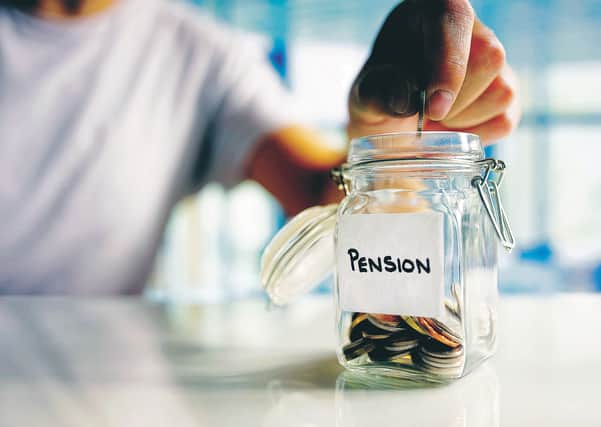Get to know your pension and how to make the most of it


According to the Office for National Statistics (ONS), 77 per cent of employees were in a workplace pension scheme in 2019, marking the highest membership rate since comparable records started in 1997.
Automatic enrolment into workplace pensions, which started in 2012, has had a huge impact in getting people into the habit of saving for later life. But while many are now saving for their long-term future, pensions can still be tricky to understand.
Advertisement
Hide AdAdvertisement
Hide AdHere’s some tips from Jamie Jenkins, head of global savings policy at Standard Life, for getting to know your pension better.
What’s the difference between pensions and other savings?
A pension is designed to provide an income in retirement. Money is paid into a plan and invested by your pension provider, using your investment instructions, or you can let them make that decision for you.
Another big difference is that you receive some tax back on the money saved into your pension, that would have otherwise gone to the government. How much you get when you’re ready to take your pension will depend on how much you save, how your pension investments perform and how long you’re invested for.
What types of pensions are there?
Starting with your state pension, how much you receive depends on your national insurance record, which you can get an estimate of at gov.uk/check-state-pension.
If you also have a workplace pension, contributions will be taken directly from your salary and put into a pension plan, arranged by your employer. Government contributions are added in the form of tax relief.
Another option is a private or personal pension, where you choose the provider and arrange for your contributions to be paid directly from your bank account.
Why should I keep saving into my workplace pension?
Effectively, you and your employer are putting part of your salary away now, tax-free. A good way to look at this is that your workplace pension is essentially deferred pay for your future self.
What’s in my pension?
Pension providers usually offer a range of funds where your money can be invested. If you belong to a workplace scheme, and you don’t say how you want your contributions invested, your money will automatically go into a “default” fund set up by the provider.
When can I use my pension?
Advertisement
Hide AdAdvertisement
Hide AdThe flexibility of private pensions means you can usually start taking money from age 55.
How do I decide when to take money from my workplace pension?
When and how you take money from your pension is a big decision – it can affect how long your pension pot lasts.
The pension freedoms introduced in 2015 allow people aged 55 or over to take their pensions however they wish. The first 25 per cent of pots is tax-free.
Before you take any money out though, consider if you really need to, and remember that you don’t need to take all your tax-free cash in one go.
How much should I be saving into my pension?
Consider how much you earn currently and what you would need in retirement to replace that income.
Keep in mind that you may have a mortgage which will be paid off, and children who are no longer dependent.
There is no precise answer as to how much you need to save, but many experts suggest 12-15 per cent of your salary is a good target to aim for.
Advertisement
Hide AdAdvertisement
Hide AdAbove all, think about what you can afford to save. Your future self won’t regret it. And remember, depending on how near retirement you are, it might be worthwhile getting expert advice from a financial adviser.